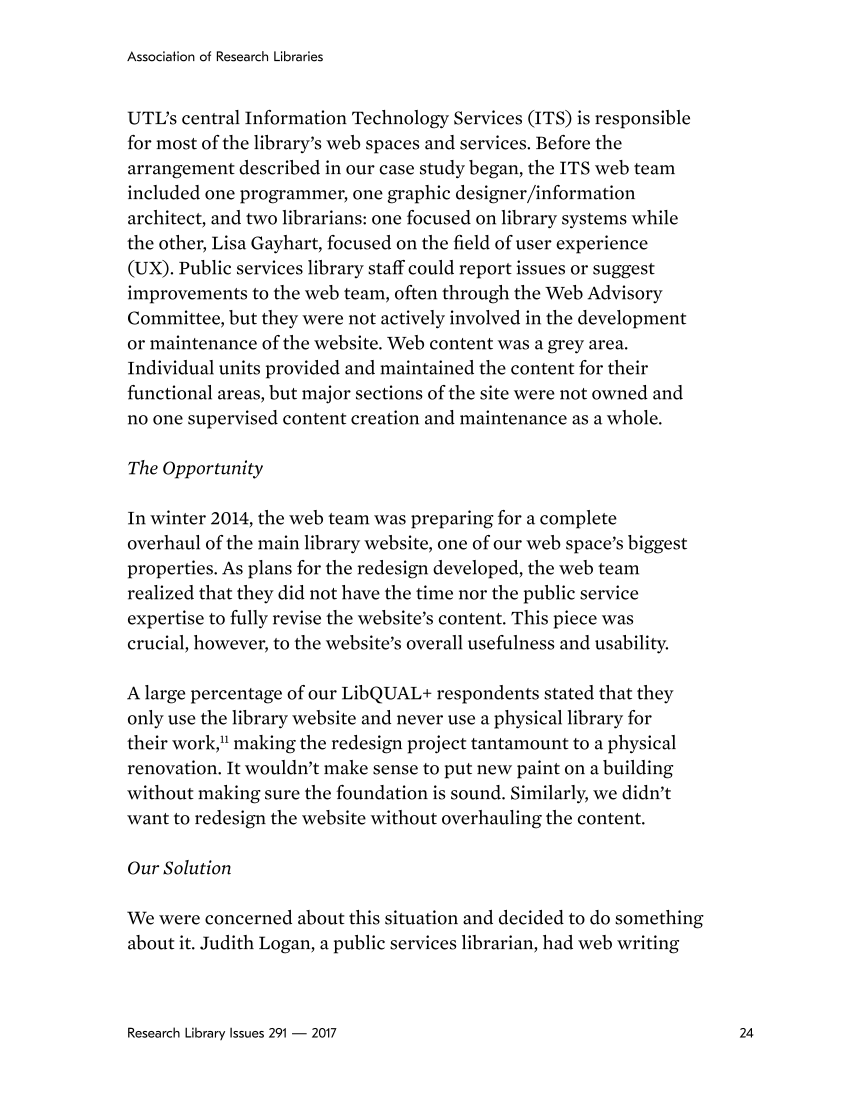24 Association of Research Libraries Research Library Issues 291 — 2017 UTL’s central Information Technology Services (ITS) is responsible for most of the library’s web spaces and services. Before the arrangement described in our case study began, the ITS web team included one programmer, one graphic designer/information architect, and two librarians: one focused on library systems while the other, Lisa Gayhart, focused on the field of user experience (UX). Public services library staff could report issues or suggest improvements to the web team, often through the Web Advisory Committee, but they were not actively involved in the development or maintenance of the website. Web content was a grey area. Individual units provided and maintained the content for their functional areas, but major sections of the site were not owned and no one supervised content creation and maintenance as a whole. The Opportunity In winter 2014, the web team was preparing for a complete overhaul of the main library website, one of our web space’s biggest properties. As plans for the redesign developed, the web team realized that they did not have the time nor the public service expertise to fully revise the website’s content. This piece was crucial, however, to the website’s overall usefulness and usability. A large percentage of our LibQUAL+ respondents stated that they only use the library website and never use a physical library for their work,11 making the redesign project tantamount to a physical renovation. It wouldn’t make sense to put new paint on a building without making sure the foundation is sound. Similarly, we didn’t want to redesign the website without overhauling the content. Our Solution We were concerned about this situation and decided to do something about it. Judith Logan, a public services librarian, had web writing


















































